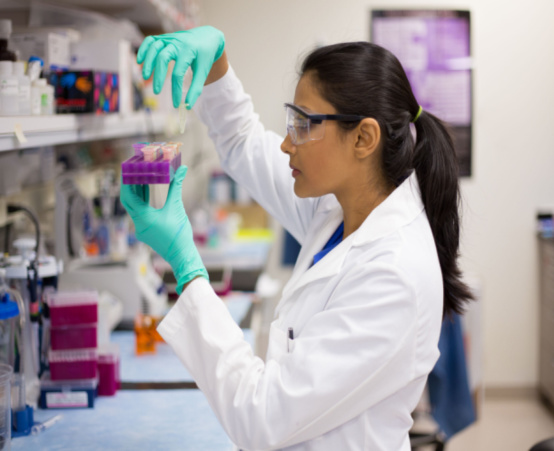Skeletal muscle performance and disease

Skeletal muscle is essential at enabling us to move, eat and breathe. Individual genes can influence muscle strength and lead to muscular diseases.
Several rare childhood diseases affect skeletal muscle. This includes congenital muscular dystrophy and Duchenne muscular dystrophy (DMD) which feature muscle degeneration and weakness that worsens over time.
The onset and progression of these conditions vary greatly between children. Some lose their ability to walk years earlier than others who have the same disorder.
Understanding how high-functioning muscles work can help us understand how skeletal muscular diseases develop. We found that a change in the alpha-actinin-3 (ACTN3) muscle gene stops the production of the ACTN3 protein. We dubbed the ACTN3 protein the “gene for speed” after discovering it in most elite sprint athletes. We also identified it as a major factor in muscle mass and strength in people.
ACTN3 may help explain differences in symptoms in children with skeletal muscle disorders.

Who does it affect?
Who does it affect?
- A change in the ACTN3 gene which stops cells producing the ACTN3 protein is normal within the human population.
- One in five Australians and more than 1.5 billion people worldwide lack the ACTN3 protein, mostly those with European ancestry.
- Duchenne muscular dystrophy (DMD) is linked to the X-chromosome, which means only males are affected. DMD is the most common inherited muscle disease and affects about one in 3,500 boys.
- DMD is usually diagnosed at preschool and without treatment, patients lose their ability to walk between ages eight to 14 and can die in their 20s.
Our skeletal muscle research
Our skeletal muscle research
We gained international recognition for discovering the gene ACTN3 and identifying a mutation that stops the ACTN3 protein from being produced in skeletal muscle. This common variation influences muscle function and performance. Our research into the gene has greatly improved the understanding of normal skeletal muscle structure, function and growth. It also highlights major roles for the protein in health and fitness in children and across the human lifespan.
Our team is using pioneering stem cell technology to study DMD and other muscular diseases. Our Musculoskeletal Research Laboratory uses human stem cells (‘seed’ cells) from patient skin or blood to grow skeletal muscle. This helps us understand muscle development, model inherited diseases and test new therapies for rare muscle diseases. The muscle cells are 2D but we’re working on creating 3D mini (skeletal muscle) organs so we can better study disease and treatments.
We’re focusing on further identifying the role of the ACTN3 protein in childhood muscular disease. We’re also studying the effect of ACTN3 deficiency in health and disease including how ACTN3 influences muscle-wasting associated with age and cancer.
Our muscular dystrophy program is investigating pathways activated by changed or absent proteins and how they result in muscle damage, inflammation and scarring. Our clinical trials evaluating drugs and nutritional supplements are trying to target these pathways.
Impacts of our research

Impacts of our research
- We helped create the multinational Powergene Consortium to study the genetic influence of sprint and power performance in elite athletes. This will help identify new treatment pathways for inherited and acquired diseases in children.
- We discovered a new gene LMOD3 that causes a deadly muscle disorder, nemaline myopathy. When LMOD3is missing, muscle cannot develop normally, resulting in extreme muscle weakness and death in most affected babies. The breakthrough showed LMOD3 protein is fundamental in muscle development and crucial for normal muscle function which has widespread implications for therapy in muscle disorders.
- We led the world-first finding that ACTN3 deficiency is rare in sprint athletes. This suggests the protein is a major factor in skeletal muscle performance and plays a crucial role in the function of fast-twitch muscle fibres needed for rapid forceful movement. Findings also suggest that ACTN3 deficiency is beneficial for endurance performance.
- W proved that variations in ACTN3 influence disease severity and progression in DMD, revealing a link between a common gene change in ACTN3 and the degree of muscle weakness and rate of disease progression. As a result, testing for the ACTN3 gene will likely become part of a more personalised and targeted approach for DMD treatment.
Our vision
Our vision
Prevention and cure are ultimate goals. Meanwhile we hope to guide doctors working with families of children who have muscular diseases towards interventions that improve muscle function and strength. We aim to personalise treatments by enrolling children in programs tailored to their individual needs.




